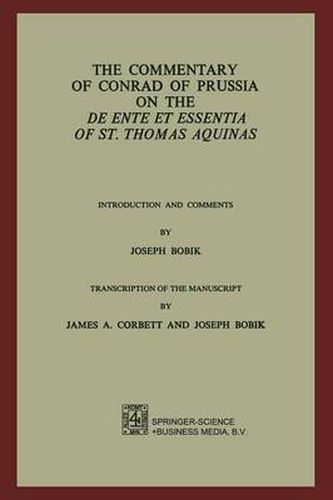Readings Newsletter
Become a Readings Member to make your shopping experience even easier.
Sign in or sign up for free!
You’re not far away from qualifying for FREE standard shipping within Australia
You’ve qualified for FREE standard shipping within Australia
The cart is loading…






This title is printed to order. This book may have been self-published. If so, we cannot guarantee the quality of the content. In the main most books will have gone through the editing process however some may not. We therefore suggest that you be aware of this before ordering this book. If in doubt check either the author or publisher’s details as we are unable to accept any returns unless they are faulty. Please contact us if you have any questions.
I. THE MAN, CONRAD OF PRUSSIA Conrad of Prussia is not so much as mentioned in any of the usual sources. And even such notable mediaevalists as Mlle. Marie-Therese d'Alverny, Conservateur en-chef, and J. Reginald O'Donnell, C. S. B. , of the Pontifical Institute of Mediaeval Studies, Toronto, Canada, have been unable to identify him. Nothing at all, therefore, is known about Conrad, if that is the author’s name. For there is some doubt that it is. In the colophon of the Admont commentary on Aquinas’ De Ente et Essentia,l we find a word, so completely erased that it is illegible, followed by the words de Prusya.
Martin Grabmann argues that it is correct to feel that the erasure is an erasure of the name Conradi, since in the colophon of the Admont commentary on Dominicus Gundissalinus’ De Unitate et Uno,2 which follows the commentary on the De Ente et Essentia, we find again an erased word followed by the words de Prusya.
But the erasure is not complete. One can here read the name Conradi.
3 And so, the manuscript of the commentary on the De Unitate et Uno clearly attributed this work to Conrad of Prussia before the attempted erasure.
$9.00 standard shipping within Australia
FREE standard shipping within Australia for orders over $100.00
Express & International shipping calculated at checkout
This title is printed to order. This book may have been self-published. If so, we cannot guarantee the quality of the content. In the main most books will have gone through the editing process however some may not. We therefore suggest that you be aware of this before ordering this book. If in doubt check either the author or publisher’s details as we are unable to accept any returns unless they are faulty. Please contact us if you have any questions.
I. THE MAN, CONRAD OF PRUSSIA Conrad of Prussia is not so much as mentioned in any of the usual sources. And even such notable mediaevalists as Mlle. Marie-Therese d'Alverny, Conservateur en-chef, and J. Reginald O'Donnell, C. S. B. , of the Pontifical Institute of Mediaeval Studies, Toronto, Canada, have been unable to identify him. Nothing at all, therefore, is known about Conrad, if that is the author’s name. For there is some doubt that it is. In the colophon of the Admont commentary on Aquinas’ De Ente et Essentia,l we find a word, so completely erased that it is illegible, followed by the words de Prusya.
Martin Grabmann argues that it is correct to feel that the erasure is an erasure of the name Conradi, since in the colophon of the Admont commentary on Dominicus Gundissalinus’ De Unitate et Uno,2 which follows the commentary on the De Ente et Essentia, we find again an erased word followed by the words de Prusya.
But the erasure is not complete. One can here read the name Conradi.
3 And so, the manuscript of the commentary on the De Unitate et Uno clearly attributed this work to Conrad of Prussia before the attempted erasure.